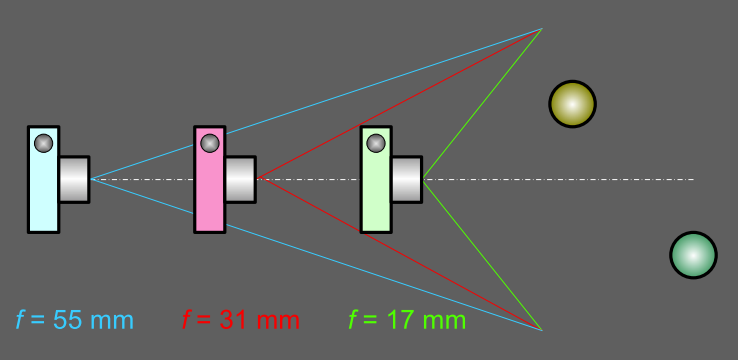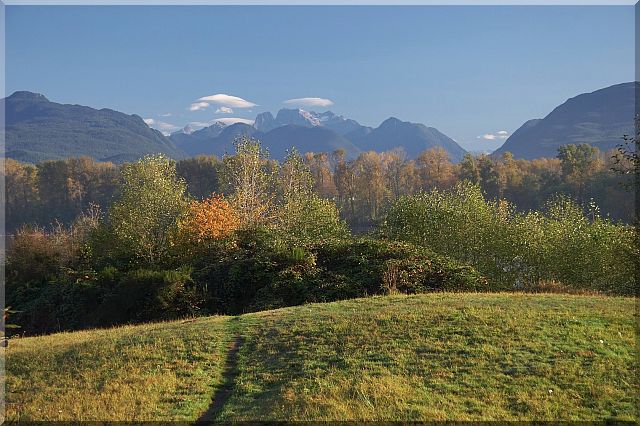This is probably one of the least understood and ignored aspects of using different focal lengths by beginners. They see “zooming” mainly as a way to get closer to or move away from the subject. Which is correct but it doesn’t say the whole story.
The term perspective (in an optical sense) describes the spatial relationships between the objects of a scene represented on a flat surface (like a monitor or a piece of paper). There is a lot of literature regarding perspective and most photographers and graphical artists are very well educated in this area.
Today I will stop to one characteristic feature of perspective defined by: the objects look smaller as their distance from the observer increases.
Let’s try a simple experiment that anyone can do with a zoom camera. We start with two objects identical in size. For example, two small cylindrical containers for tea placed on the same level – see the photo below:
The following steps will be:
- move one container in front of the other (enough for you to see that the one in front looks larger that the one behind);
- using the widest angle (the shortest focal length) setting for your lens, position the camera in such a way that the height of the object in front and is about 75% of the height of the image;
- focus on the object in front and take a picture;
- change the zoom setting somewhere in the middle range so that the image in the viewfinder looks very similar with what you see with your own eyes, then position the camera in such a way that the height of the object in front and is about 75% of the height of the image;
- focus on the object in front and take another picture;
- using the narrower angle (the longest focal length) setting for your lens, position the camera in such a way that the height of the object in front and is about 75% of the height of the image;
- focus on the object in front and take the last picture.
The idea is to concentrate on the front object and move away every step while keeping its height constant. The following diagram depicts the steps described above:
The focal distances in the diagram correspond to a Canon DSLR with an APS-C sensor using a lens capable of the indicated focal lengths (e.g. EF-S 17-55/2.8 or EF-S 17-85/4-5.6). Obviously, you can try this experiment with a small compact zoom camera as well using its available lens: the focal distances will be different but the results of the experiment similar. The other settings (aperture, exposure time or sensitivity) are less important for what we want to discover. Just make sure that you keep the camera steady.
Here is what I’ve got:
If you look at the relationship between the two containers in the photo, you will see that:
- the shorter the focal distance is the “farther” the two objects seem to be;
- the longer the focal distance is the “closer” the two objects seem to be.
But the distance between the objects is the same!
The conclusion of the experiment is that the focal length (and, subsequently, the angle of view) used to take a photo will distort the perspective in the sense mentioned above. We can use this effect in very creative ways when capturing images with our camera. The key is to position ourselves with the camera in such a way that will allow us to use the focal length we desire.
The following photos show how the perspective distortion can be used artistically.
The first uses a short focal distance to highlight the large roots of the subject in the foreground: here the roots of a banyan tree look almost gigantic in report to the rest of the scene.
The next photo is a landscape captured with a longer focal distance: the goal here was to “enlarge” the mountains and to “compress” the distances between the photographic planes balancing the composition.
The following capture goes even more extreme: the lake looks so “compressed” that the trees in the background become the subject.
In some future posts I will return to the perspective from a different point of view. Those involved in architectural photography know how difficult can be to fight perspective distortions without enough knowledge, skill and tools.
In the mean time, if you own a zoom camera, try my experiment outdoors using two people in place of tea containers. I bet the results will provide some fun as well.








